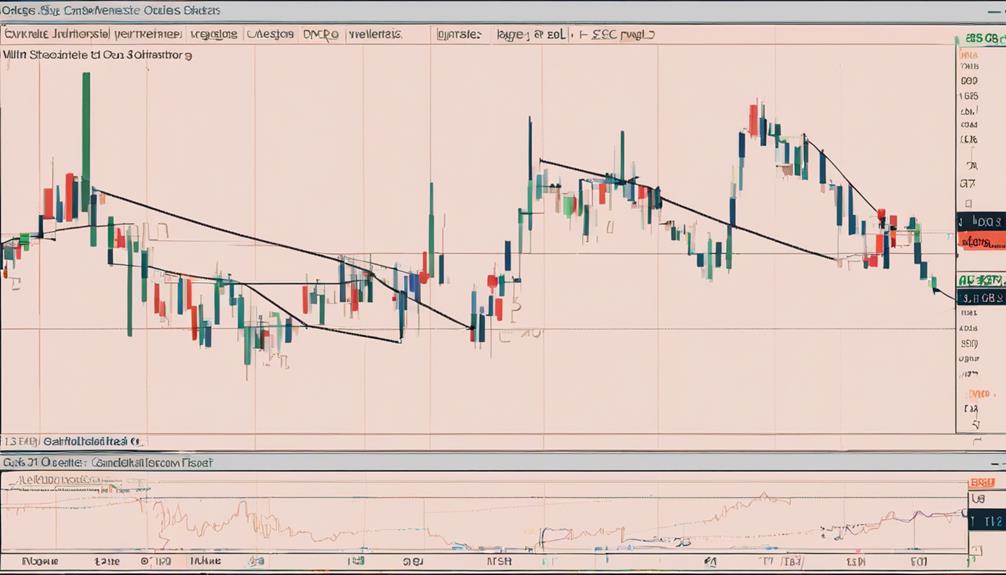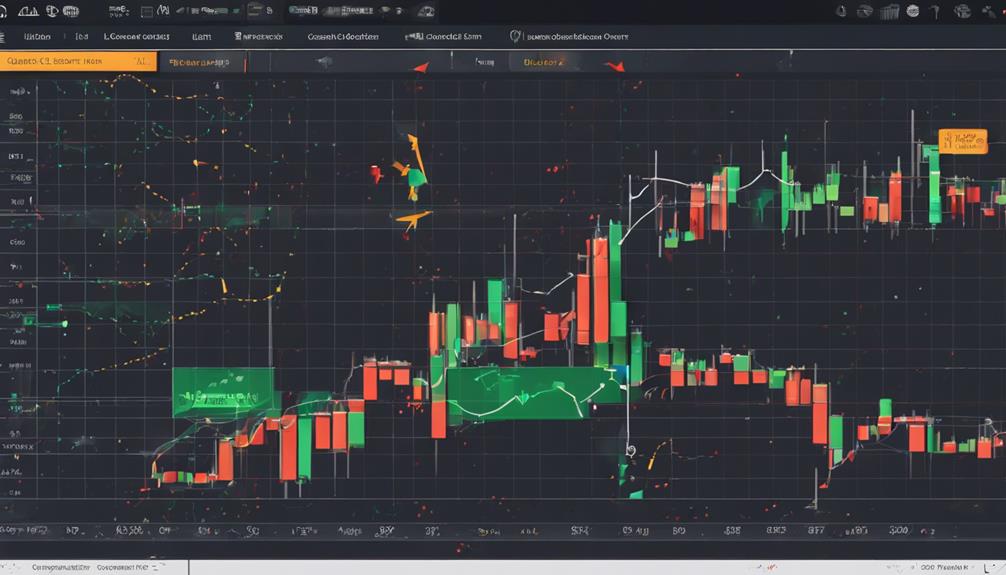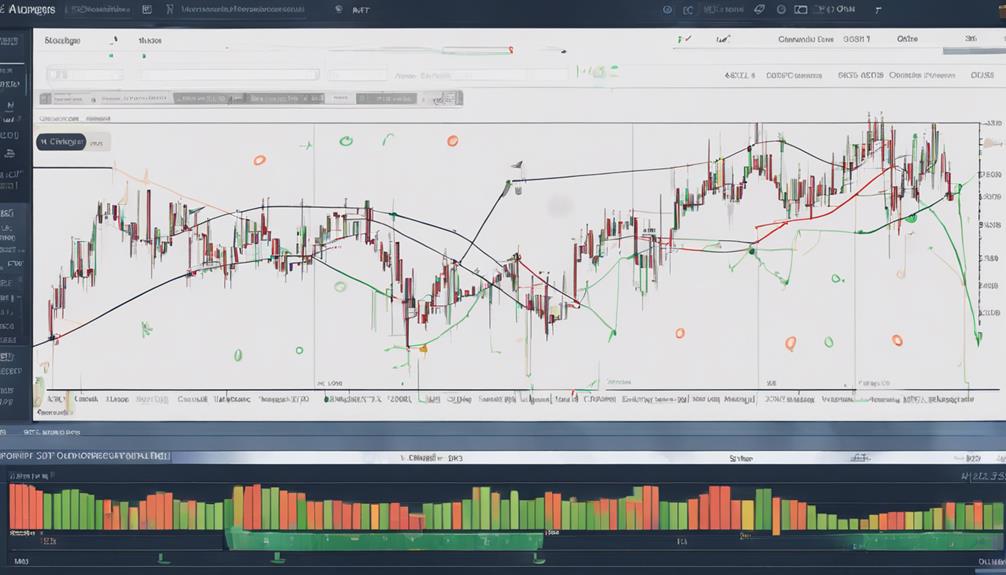As you navigate the complexities of trading, mastering the Stochastic Oscillator could be your key to unlocking profitable opportunities. By understanding how to interpret signals and implement strategies effectively, you can enhance your trading prowess.
However, there's more to explore beyond the basics. Discover advanced tips, pitfalls to avoid, and expert insights that could elevate your trading game to new heights.
Stay tuned to uncover the nuances of trading proficiently with the Stochastic Oscillator and take your skills to the next level.
Understanding Stochastic Oscillator Basics
To effectively grasp the essence of trading with the Stochastic Oscillator, it's imperative to comprehend its fundamental principles and mechanics. The Stochastic Oscillator consists of two lines, %K and %D, which are crucial in analyzing price movements.
When using the stochastic, traders look for overbought and oversold conditions, typically above 80 and below 20, respectively. In an upward trend, traders may observe the %K line making a higher high, indicating bullish momentum. Conversely, in a downtrend, the %K line may form a lower high, signaling potential bearish divergence.
The %D line, represented by a dotted line, acts as a signal line and can help confirm trends identified by the %K line. Understanding these dynamics is essential for utilizing the stochastic oscillator effectively in your trading strategies.
Interpreting Stochastic Oscillator Signals

Interpreting Stochastic Oscillator signals involves analyzing the %K and %D lines as they cross over the overbought and oversold levels to identify potential bullish or bearish signals. When the %K line crosses above the %D line, it signals a potential bullish momentum, while a cross below the %D line indicates a bearish sentiment.
Paying attention to divergences between price action and the Stochastic Oscillator can reveal crucial information about potential trend reversals or continuations. Bearish divergences, where the price forms a high price but the oscillator forms lower highs, can signal a potential downtrend. On the other hand, bullish divergences, where the price makes lower lows but the oscillator forms higher lows, may indicate a possible upward movement in trend direction.
Utilizing Stochastic Oscillator in Trading Strategies

When employing trading strategies, incorporating the Stochastic Oscillator as a key tool can significantly enhance decision-making processes in identifying market conditions.
Utilize the stochastic indicator to pinpoint overbought or oversold market conditions and make informed trading decisions.
Implement the One22 method when using the stochastic oscillator as a momentum indicator.
Trading overbought and oversold conditions with the stochastic indicator can be profitable in sideways markets.
Understanding divergence and its application with stochastic indicators can enhance trade confirmation and potential trend reversals.
Advanced Tips for Stochastic Oscillator Analysis

As you progress to delve deeper into mastering the Stochastic Oscillator for trading proficiency, incorporating advanced tips can further elevate your analysis and decision-making capabilities.
When using the stochastic oscillator, recognizing the different types of markets is crucial. In range-bound markets, identifying accumulation and distribution zones aids in strategic entries and exits.
The One22 method, in conjunction with the stochastic indicator, helps gauge momentum for informed trading decisions. Divergence signals play an important role in enhancing trading strategies and confirming trades.
Adjusting overbought and oversold levels based on the current trend direction enables effective trading in pullbacks and continuations. Analyzing the market with various time frames provides a better understanding of trends and support/resistance levels, especially when combined with moving averages.
Wall Street traders often rely on these advanced techniques to make more precise trade decisions.
Pitfalls to Avoid When Using Stochastic Oscillator

To maximize your trading success with the Stochastic Oscillator, it's vital to steer clear of common pitfalls that can hinder your decision-making process and profitability. When using the stochastic indicator, be mindful of the following:
- Don't rely solely on stochastic oscillator signals: Consider other confirming indicators for trade decisions.
- Don't overlook market context: Context and conditions are crucial to avoid false signals.
- Avoid overtrading based on stochastic readings alone: This can lead to unnecessary losses.
What Are the Key Strategies for Trading Proficiently with the Stochastic Oscillator?
When it comes to swing trading with stochastic oscillator, it’s essential to use key strategies to trade proficiently. These include waiting for the cross and using overbought and oversold levels to your advantage. Additionally, employing trend analysis and setting strict stop-loss orders can help maximize trading success.
Frequently Asked Questions
How Do You Trade With a Stochastic Oscillator?
To trade with a stochastic oscillator, identify overbought and oversold conditions. Generate buy signals when oversold and sell signals when overbought. Implement reversal strategies in sideways markets. Combine with indicators for confirmation. Consider market context for effective decisions.
What Is the Best Indicator With Stochastic Oscillator?
To enhance your trading with the stochastic oscillator, consider using the Moving Average Convergence Divergence (MACD). It validates stochastic signals, offering deeper insights into market trends for improved entry and exit points.
What Is the Best Stochastic Setting for Day Trading?
For day trading, consider using the 5,3,3 stochastic setting to capture short-term price movements swiftly. If seeking a smoother experience in volatile markets, opt for the 14,3,3 setting. Experiment with settings to fit your strategy.
What Is Stochastic 14 3 3?
You think you know Stochastic 14 3 3, but its parameters alter sensitivity and smoothing. Traders tweak settings for style, time frame, and markets. Mastering this can enhance decision-making and trading proficiency.
Conclusion
In conclusion, mastering the Stochastic Oscillator is essential for successful trading. By understanding its signals, implementing effective strategies, and avoiding common pitfalls, you can enhance your trading skills and make informed decisions in various market conditions.
Just as a skilled navigator reads the stars to guide their ship, traders can use the Stochastic Oscillator to navigate the complexities of the market and steer towards profitable opportunities.
Stay vigilant, stay informed, and trade proficiently with confidence.
